This post may contain affiliate links. Please read our disclosure policy.
This gluten free focaccia bread is crispy on the outside and light and airy on the inside, with that well-developed yeasty flavor and aroma you remember. Make it with your favorite dried herbs, or keep it simple!
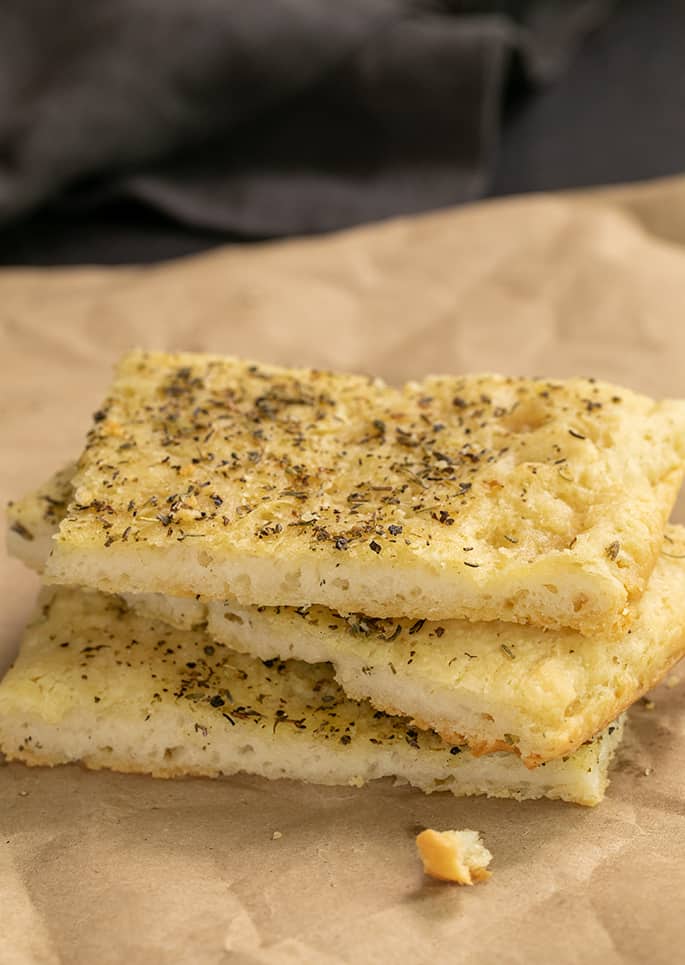
my take
Nicole's Recipe Notes
I worked really hard to master this gluten free focaccia recipe, and I promise that it will only take one bite to convince you that it's the best.
The most important ingredients in the recipe are the gluten free flours — be sure you've got the right ones on hand as that's the only way to recreate my delicious results.
This recipe takes some time, but most of it is just waiting for the dough to rise. The results are well worth it for bread that has a thin, crispy outside, and a soft and fluffy inside with tons of flavor.
Recipe ingredients
- Gluten free flour blend – Any high quality gluten free flour blend that is meant to be used in yeast breads should work. I like Nicole's Best multipurpose gluten free flour blend (with added xanthan gum) and Better Batter's original blend gluten free flour best. If you use Bob's Red Mill 1-to-1 gluten free, you'll need to add about 1/2 teaspoon more xanthan gum per cup of flour or the dough won't hold together.
- Tapioca starch – Adds elasticity and stretch the bread. You'll need more even though your blend already contains some.
- Yeast – Gives this bread its rise, and tons of flavor that develops mostly during the first cold rise.
- Warm water – Hydrates the dough, activates the yeast, and bring the dough together.
- Honey – To feed the yeast and add a touch of depth of flavor and sweetness.
- Olive oil – Flavors the bread, adds fat for moisture and tenderness.
- Herbs – I love using a blend of savory herbs, but you can also go for classic dried rosemary—or leave out the herbs entirely for a more neutral flavor.
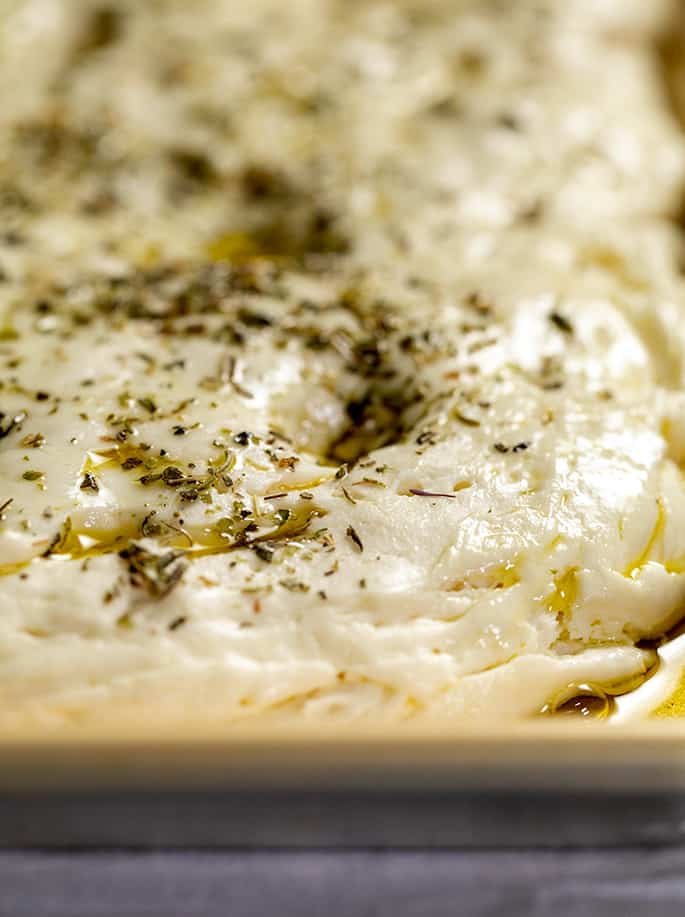
My Pro Tip
Expert tips
Measure ingredients carefully
Getting yeast bread to rise almost always comes down to two conditions: proper measurements/ingredients, and time. If you choose a flour blend that isn't properly balanced for yeast bread, the bread probably won't rise. Make sure your yeast is fresh, and measure your water carefully. Yeast is most active in a warm, wet environment, so if you don't have enough water it will rise more slowly, and less.
Be patient during the second rise
The first rise is for flavor development, so if you don't see the dough getting big enough, don't worry. The second rise is for bulk, and that's where most of the holes in the bread are created. You can turn on your oven to a low temperature (around 300°F) and place your rising dough on top of the range to help speed the rise. Don't place it in the oven, even on the lowest temperature, since that may kill the yeast.
Protect your pan
The raw dough is so sticky, there's a chance it may stick to your pan during baking. You can prevent this by thoroughly coating your sheet pan in oil, or lining it with a sheet of parchment paper.
Slice with a pizza cutter
The texture of the bread is similar to pizza dough, so a pizza cutter glides across it much easier than a knife. You can also use kitchen shears.
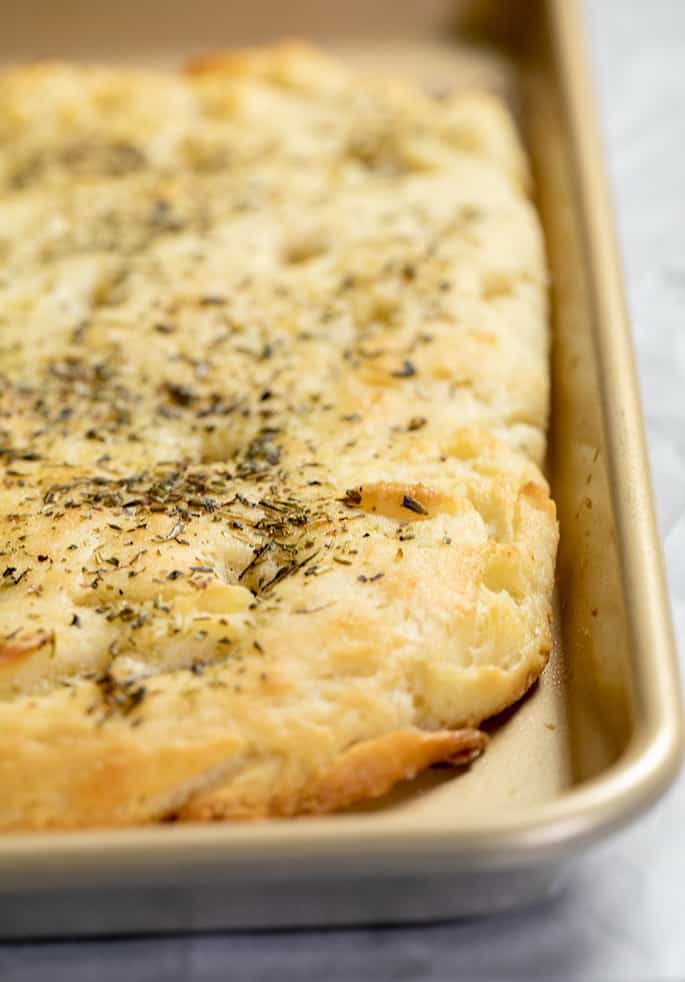
Ingredient substitutions
Instant yeast
There is no non-yeast substitute for yeast. But if you don’t have instant yeast (also called breadmaker or rapid-rise yeast), you can use active dry yeast.
To replace instant yeast with active dry yeast, multiply the amount (by weight) of the instant yeast (here, 6 grams) by 1.25 or 125%. Here, that would mean 7.5 grams of yeast. Just add a bit more after you reach 7 grams.
Active dry yeast has a thicker coating around the yeast, so you should soak it in some liquid in the recipe (here, water) until it foams before adding it with the rest of the water.
Olive oil
We use a ton of extra virgin olive oil in this recipe. Make sure you use an oil you really like the smell and taste of. A neutral cooking oil will crisp the bread, but not add flavor, which may make the bread seem oily, so try to use less.
Herbs and toppings
This gluten free focaccia bread is so versatile when it comes to toppings. I love using dried herbs de Provence, but you can play around a bit to find your favorites.
- Make a simple gluten free rosemary bread by topping your focaccia with dried or fresh rosemary, olive oil, and flaky sea salt
- Add savory elements to your gluten free Italian bread with sliced onions, sun-dried tomatoes, and roasted red peppers
- Experiment with different herbs — dried rosemary, thyme, basil, and oregano pair beautifully with this gf focaccia bread.

Gluten Free Focaccia Recipe
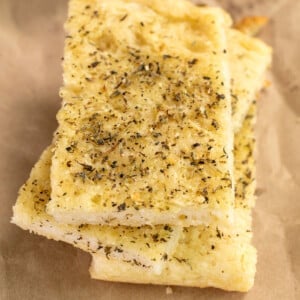
Equipment
- Stand mixer or heavy duty handheld mixer
- Large lidded bucket for proofing
- Jelly roll pan (10-inches x 15-inches x 1-inch)
Ingredients
For the starter
- ⅞ cup (123 g) all purpose gluten free flour blend, (See Recipe Notes)
- 1 teaspoon xanthan gum , (omit if your blend already contains it)
- 2 ½ tablespoons (20 g) tapioca starch/flour
- 2 teaspoons (6 g) instant yeast
- 1 ¾ cups (14 fluid ounces) warm water
- 1 tablespoon (21 g) honey
For the dough
- 1 ¾ cups (245 g) all purpose gluten free flour blend, (Better Batter or mock Better Batter is best) (See Recipe Notes)
- 2 teaspoons xanthan gum, (omit if your blend already contains it)
- ⅜ cup (48 g) tapioca starch/flour
- 1 teaspoon (6 g) kosher salt
- 1 tablespoon (12 g) granulated sugar
- Risen starter
- 3 tablespoons (42 g) extra virgin olive oil, (See Recipe Notes)
For the topping
- ¼ cup (56 g) extra virgin olive oil
- 2 tablespoons dried herbs de Provence, (optional)
Instructions
Make the starter.
- Place all the starter ingredients in a medium-size bowl, and whisk until well-combined. The mixture will be thick and shapeless.
- Cover the bowl with plastic wrap, and set it aside in a warm, draft-free location to rise until at least doubled in size.
- This will take about an hour in a relatively warm environment, but could take much longer in a cold, dry kitchen.
Make the dough
- Once the starter has finished rising, in the bowl of a stand mixer fitted with the paddle attachment or a large bowl with a heavy-duty handheld mixer, place the flour, xanthan gum, tapioca starch/flour, salt, and sugar, and whisk to combine well.
- Add the risen starter and the 3 tablespoons olive oil and mix on low speed until combined.
- Raise the mixer speed to medium-high and mix until the dough begins to take on a whipped appearance (about 3 minutes).
For the cold rise
- Transfer the dough to a lightly oiled proofing bucket or bowl with a lid that’s large enough for the dough to double (although it won’t likely double).
- Cover the bowl or bucket tightly with the lid (if you don’t have a lid make sure you cover it very well with plastic wrap) and place it in the refrigerator for at least 12 hours and up to 3 days.
Shape and top the dough
- On baking day, begin with a rimmed baking sheet that’s about jelly roll pan size (10-inches x 15-inches). A half baking sheet (13-inches x 18-inches) is fine, too.
- Drizzle about 2 tablespoons of the olive oil from the topping on the bottom of the baking sheet, and spread it evenly around the surface of the pan.
- Remove the prepared dough from the refrigerator and turn it out onto the oiled baking sheet.
- Drizzle the top and your clean hands lightly with a bit more oil, and, with the tips of your fingers, press and push the dough into a rectangle about 9-inches x 13-inches.
- The dough will be very sticky and difficult to handle. Just keep your hands oiled and use a light touch.
- Using an oiled rolling pin, an oiled bench scraper, or an oiled cake turner, smooth the top of the rectangle as much as you can.
- Sprinkle the top of the dough evenly with the (optional) dried herbs. Drizzle evenly with the remaining olive oil, brushing it very gently with a pastry brush to distribute the oil evenly.
For the second rise
- Cover the top of the dough with oiled plastic wrap and place it in a warm, draft-free location to rise until nearly doubled in size (at least 2 hours). The dough will rise both up and out.
Bake the bread.
- When the dough is nearly at the end of its rise, preheat your oven to 400°F.
- Uncover the risen dough, drizzle lightly with more olive oil if you like, and place in the center of the preheated oven. Bake for 15 minutes.
- Reduce the oven temp to 375°F and bake until most of the oil has been absorbed by the bread, the top is lightly golden brown, the bread is firm to the touch, and the internal temperature with an instant-read thermometer in the center reads at least 200°F (another 10 to 15 minutes).
- Remove the pan from the oven, and immediately transfer the bread to a wire rack to cool for about 20 minutes. Slice and serve warm.
Video
Notes
Nutrition
Nutrition information is automatically calculated, so should only be used as an approximation.
make ahead/leftovers
Storage instructions
As with most gluten free breads, your focaccia is best eaten the same day that it's made. After that, it tends to harden fairly quickly.
If you have don't have a lot of leftovers, you can save your bread for the next day by tightly wrapping it and storing it in an airtight container on the counter.
For longer storage, I recommend you freeze the bread. After it's completed cooled, wrap it tightly in cling wrap or aluminum foil, and then place it inside a zip-top bag before freezing. The bread will last up to a month in the freezer.
The day before you want to have it, remove it from the freezer and allow it to defrost in the refrigerator. When it's time to eat, heat the gluten free bread in the oven until it's warmed through.
FAQs
Gluten free focaccia is similar to pizza crust in that it's made using many of the same ingredients and it's flat. However, the yeast is this recipe is more active in focaccia because the recipe has a lot of moisture, so it bakes up to have a fluffier interior. As the outside has plenty of olive oil, it gets irresistibly crispy, while the inside stays soft and airy. Also, since the yeast has more time to develop, it tastes deliciously tangy.
Though we call it a dough because we're baking bread, it would be easier to call the unbaked form a gluten free focaccia batter. That's because it's very sticky, wet, and shapeless — it's nothing like traditional, wheat-based doughs.
It could be that your yeast was bad, the yeast didn't have enough time to rise, the proofing container you used wasn't properly sealed causing it to lose moisture, or you used a poorly balanced gluten free flour blend that absorbed way too much moisture.
Yes! Every rice-based gluten free flour blend that works at all will have tapioca starch as an ingredient. This recipe calls for more tapioca starch, so please don't skip it!
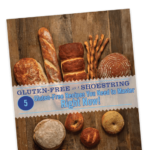

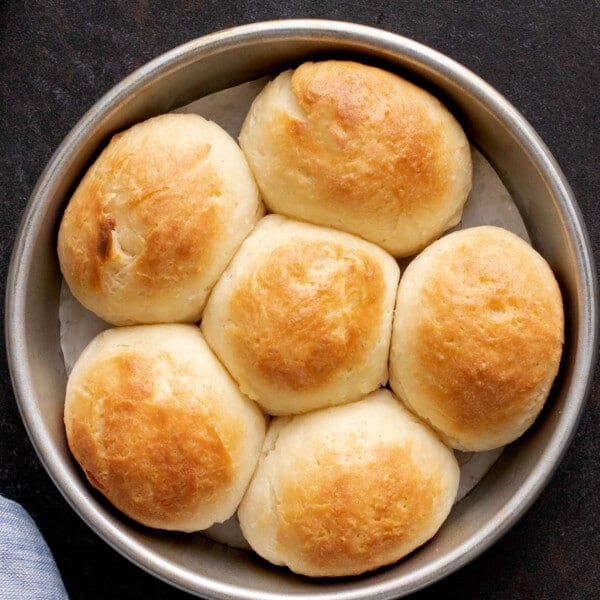
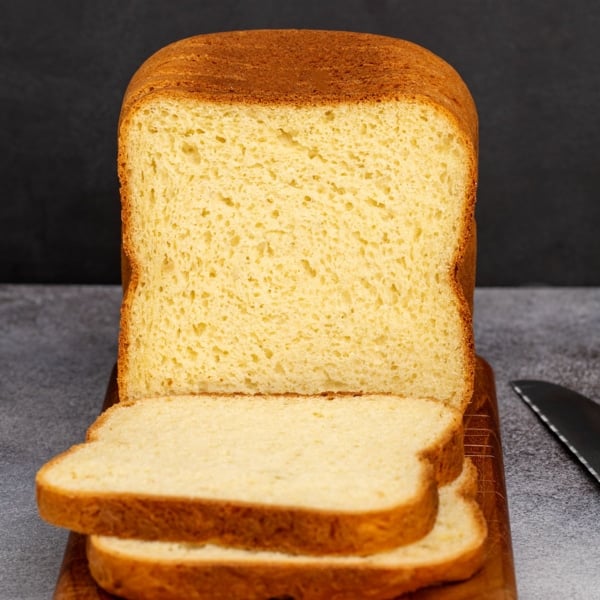
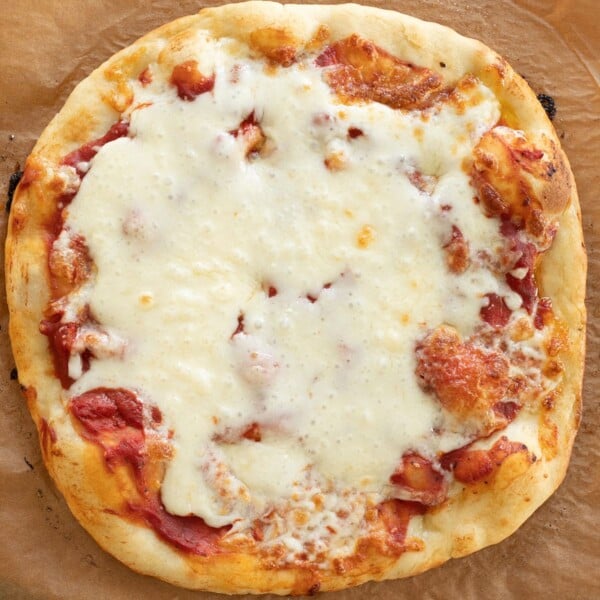
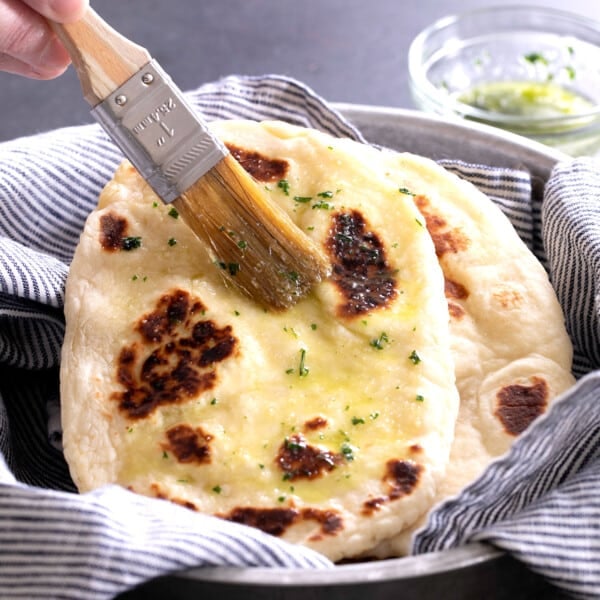









Hello,
I started off by making the starter. You wrote the starter should be thick and shapeless. After mixing the starter ingredients. It is runny like pancake batter. Is that suppose to be like that?
I’m afraid that doesn’t sound quite right, Zarah, but I can’t be sure since I don’t know if you substituted any ingredients or what flour blend you used. The flour blend you use matters a ton in all gluten free baking, but especially in yeast bread baking. For full info please follow the link in the recipe card or click here to learn more about all purpose gluten free flour blends.
I wish I could post a picture of my success with this delicious focaccia! I added herbs and thinly sliced veggies on top to create one of those artistic focaccias you see on FB so much. It was not only beautiful but tasted fantastic served with dipping oil. Will be making this often!
Oh wow, Margherite, that’s very exciting. I do wish you could post a photo in comments because I would love to see that. Thank you for sharing your experience.
I was excited to try this recipe as my precious 6 year old granddaughter was recently diagnosed with Celiac’s disease. I bought the Better Batter, the Tapioca Flour/Starch, very delicious imported olive and organic Red Star Instant yeast. While it was in the oven I re-read the FAQ’s. I checked the label of the yeast package and was crushed to find out it “contained wheat”. The focaccia bread turned out amazing, but I now can’t give it to my granddaughter. I will make it again and use a GF brand of instant yeast. I would have never caught that if I didn’t read your FAQ’s.
What a shame, Renee! But I’m glad you realized before you gave it to and you’ll make it just right for her next time. :)